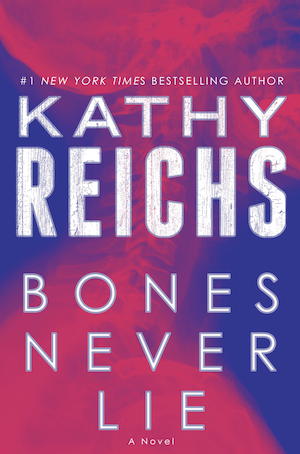 There’s no shelf large enough to hold all the books of advice on how to write. But only one sound piece ever stayed with me. To be a writer you must do two things: read and write.
There’s no shelf large enough to hold all the books of advice on how to write. But only one sound piece ever stayed with me. To be a writer you must do two things: read and write.
Photo: Marie-Reine Mattera
I grew up a reader. A classic flashlight-under-the-bedspread case, tearing through Nancy Drew mysteries and little blue biographies of fabulous women like Jane Adams. I loved Toby Tyler, the stories of a boy who ran away to join to the circus.
My own adventurous streak was hankering to turn 16 and get my driver’s license so I could run away to...wait for it...the library. Nerdvana.
It almost feels like cheating that half of my job is doing what I love. When I’m struggling at the keyboard, I can go sit on a beach with a novel and justify it as “genre studies.” Toes in the sand is my favorite place to turn pages, but books are like jeans. They suit anywhere—against my pillows, on the bus, under a hair dryer.
It’s remarkable that every story ever written is just a different combination of 26 letters. I never lose my awe for the best in the craft. As a writer, I’m always reading, always refining. Luckily, my homework suits me. I primarily like thrillers. Sometimes I wish I strayed further from my own genre, but mostly I’m a happy captive of curiosity and admiration for my peers. It’s the perennial challenge of ‘so many books, too little time.’
I read with a pen. I can’t help myself. When I see a turn of phrase or elegant prose that stops me in my tracks, I underline or make notes. The ink forges a bond with the writer, both tribute and aspiration. A hybrid of kudos, and damn-I-wish-I’d-written-that. Not plagiarism, but hopes of absorbing skill to elevate my style. Like a basketball team reviewing tapes of a competitor’s game, I hope to always improve from exposure to the best.
I’ll be straight, I like dark. I like to see humanity sans make-up, to peek into those battered houses I see from the train. Crime novels take you to worlds gritty and raw, places that (hopefully) most of us never personally encounter. Honest glimpses of darkness, safely contained in fictional cages. Why the attraction? These tales are buoyed by a common nugget of morality. Crime writers pen the worst of humanity, yet with an unshakeable conviction of its goodness. To me, none can surpass author Raymond Chandler.
Given his long shadow, you can easily forget that Chandler published only seven novels. He wasn’t the founding father of hardboiled American noir, but he was a cornerstone. His protagonist Philip Marlowe is the blueprint for the gumshoe as a tired latter-day knight, jaded and sporting bruises, but still able to rescue a citizen in distress. Solitary, wisecracking, hard-drinking, sentimental, tough. A flawed Don Quixote motivated, in the end, by honor and decency. Marlowe says in Playback, “If I wasn’t hard, I wouldn’t be alive. If I couldn’t ever be gentle, I wouldn’t deserve to be alive.” Chandler describes his detective as “a complete man and a common man and yet an unusual man.” We thriller writers couldn’t agree more. Chandler’s archetype heralds many of today’s beloved crime-novel protagonists. One glance at a Temperance Brennan novel shows that I am clearly among the beneficiaries of Chandler’s rich legacy.
Chandler’s greatest strength lies not in intricate plotting or in the whammy of the surprise twist ending, but in the masterful use of the English language. His creative metaphors, vivid descriptions, and crisp, sharp dialogue are unsurpassed. Chandler’s first short story, published in the pulp rag Black Mask was so well honed that not one phrase could be cut. Now that’s expertise.
 Chandler could describe a character without a single descriptive word. Ugly is: “From 30 feet away she looked like a lot of class. From 10 feet away she looked like something made up to be seen from 30 feet away.” Pretty is: “A blonde to make a bishop kick a hole in a stained glass window.” Magic. The whodunit matters little. What is important is the style - pure Chandler.
Chandler could describe a character without a single descriptive word. Ugly is: “From 30 feet away she looked like a lot of class. From 10 feet away she looked like something made up to be seen from 30 feet away.” Pretty is: “A blonde to make a bishop kick a hole in a stained glass window.” Magic. The whodunit matters little. What is important is the style - pure Chandler.
The same goes for setting. Marlowe’s turf is the Los Angeles of the forties and fifties, an urban patchwork of seedy hotels, smoky nightclubs, upscale bars, and dingy train and bus stations. The settings are a mélange of the stark and the glitzy, the sleazy and the swanky. Chandler recreates the place and time so vibrantly the reader can see, hear, smell, and feel it. His images of a Southern California in squalor and in splendor remain etched on the mind.
Without Chandler, the hardboiled crime tale would still exist thanks to Dashiell Hammett, James M. Cain, and others but it would lack the literary polish. Chandler wasn’t a great thriller writer, he was a great writer. Often imitated, rarely duplicated, Chandler’s voice is the siren song to all crime writers. I’m a willing victim, happy to be snared by his lyrical prose. Try him. You’ll be a blissful victim, too.
KATHY REICHS is the author of 16 New York Times bestselling novels featuring forensic anthropologist Temperance Brennan. Like her protagonist, Reichs is a forensic anthropologist—one of only around a hundred ever certified by the American Board of Forensic Anthropology. A professor in the department of anthropology at the University of North Carolina at Charlotte, she is the former vice president of the American Academy of Forensic Sciences and serves on the National Police Services Advisory Council in Canada. Reichs’s own life, as much as her novels, is the basis for the TV show Bones, one of the longest-running series in the history of the Fox network.
This "Writers on Reading" essay was originally published in "At the Scene" eNews September 2014 as a first-look exclusive to our enewsletter subscribers. For more special content available first to our enewsletter subscribers, sign up here.


